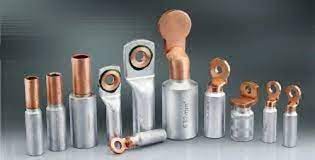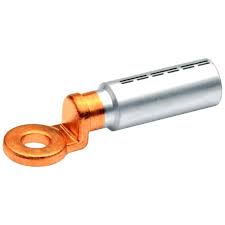BI-METALLIC CABLE LUGS & CONNECTORS
Dowell’s Bi-Metallic Cable Lugs & Connectors utilize friction welding technology for a robust and secure electrical connection. Engineered for high conductivity, these lugs ensure reliable performance in diverse applications, offering efficient power transmission and durability. The friction welding technique enhances the product’s stability and minimizes resistance for optimal electrical conductivity.
Description
Bi-metallic cable lugs and connectors are electrical connectors made from two different metals, typically copper and aluminum, that are joined together through a process known as friction welding. Friction welding is a solid-state welding process where heat is generated by the relative motion between two surfaces in contact. This heat is produced by the frictional force at the interface, and it causes the materials to soften and fuse together.
Here’s an overview of bi-metallic cable lugs and connectors with a focus on friction welding:
1. Materials:
- Copper and Aluminum: Bi-metallic connectors usually consist of a copper component and an aluminum component. Copper is an excellent conductor of electricity, while aluminum is lightweight and cost-effective.
2. Advantages:
- Optimal Electrical Conductivity: The use of copper ensures high electrical conductivity, reducing resistive losses.
- Cost-Effectiveness: Aluminum is less expensive than copper, making the connectors more cost-effective than pure copper alternatives.
- Reduced Galvanic Corrosion: The bi-metallic construction helps minimize galvanic corrosion, a common issue when connecting dissimilar metals.
3. Friction Welding Process:
- Preparation: The copper and aluminum components are prepared, usually in the form of wires or rods.
- Contact and Rotation: The two materials are brought into contact, and one of them is rotated at high speed.
- Frictional Heat: The friction between the rotating component and the stationary component generates heat at their interface.
- Plastic Deformation: The heat softens the materials, allowing for plastic deformation and intermolecular bonding at the molecular level.
- Joining: After reaching a sufficient temperature, the rotation is stopped, and the materials are pressed together to form a solid-state joint.
4. Quality Control:
- Testing: Various tests, such as electrical conductivity tests and visual inspections, are conducted to ensure the integrity of the welded joint.
- Durability: The connectors must meet standards for durability, considering factors like thermal cycling, mechanical stress, and environmental conditions.
5. Applications:
- Electrical Power Distribution: Bi-metallic cable lugs and connectors are commonly used in electrical power distribution systems, where they provide a reliable and efficient connection between copper and aluminum conductors.
6. Considerations:
- Proper Installation: It’s important to follow manufacturer recommendations for installation to ensure the longevity and effectiveness of the connectors.
- Compatibility: Ensure compatibility with the specific types and sizes of cables being used.
Bi-metallic cable lugs and connectors with friction welding offer a balanced solution, combining the advantages of both copper and aluminum while addressing potential issues associated with the use of dissimilar metals. These connectors are widely used in various industries, particularly in electrical and power distribution applications.








